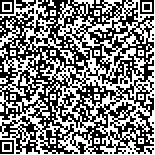| 摘要: |
| 将皖江城市带按照区县划分为46个评价单元,围绕土地产出效益,选择评价指标及模型,采用 历年土地利用变更数据及社会经济统计数据,测定土地产值密度及比较值,构建土地资源利用优化模式, 实现土地资源优化配置。研究表明:农业土地产值密度比较值较高的区域集中分布于沿江山地丘陵区、皖 中耕地集中连片区,各市区普遍较低,总体区域差异性不大;非农业土地产值密度比较值区域差异性较 大,但各市区普遍较高,沿江、紧邻江浙、省会都市圈等处于县域范围较高区域。在分析结果基础上,从 土地资源转化、土地产品交换、区域平衡补偿机制等3个方面,构建皖江城市带土地资源利用优化模式, 促进区域土地资源可持续利用。 |
| 关键词: 产值密度 土地资源 利用模式 皖江城市带 |
| DOI:10.7621/cjarrp.1005-9121.20130504 |
| 分类号: |
| 基金项目:基金项目:国土资源部2011年度公益性行业科研专项项目(201111010-2) |
|
| DENSITY OF LAND OUTPUT VALUE AND LAND RESOURCE USE PATTERN CONSTRUCTION OF WANJIANG CITY BELT |
|
Fan Shuping, Cheng Congkun, Xiang Sike, Zhang Hongmei, Hou Changli
|
|
Anhui Provincial Institute of Land Surveying and Planning,Hefei 230601
|
| Abstract: |
| The Wanjiang City Belt was divided into 46 appraisal units in this paper in terms of counties. The eval- uating indicators and model were selected and the varied data of land utilization and the statistical data of social e- conomy were used to evaluate the density of land output value and comparison value. The results indicated that are- as with higher density of agriculture land output comparison value mainly distributed in hilly areas along the Yangtze River and the concentrated and contiguous arable fields in Central Anhui Province, while urban districts had lower density of agriculture land output comparison value, but the overall regional difference was not obvious. While the comparison value in non-agriculture land output including most urban districts, the capital cities, and regions closed to Jiangsu and Zhejiang Provinces and along the Yangtze River, all had a higher degree. This paper had es- tablished the pattern of land use optimization from conversion of land resources, exchange of land products and re- gional balance in the compensation mechanism to promote regional sustainable utilization of land resources. |
| Key words: density of land output value land resource use pattern WanJiang city belt |

